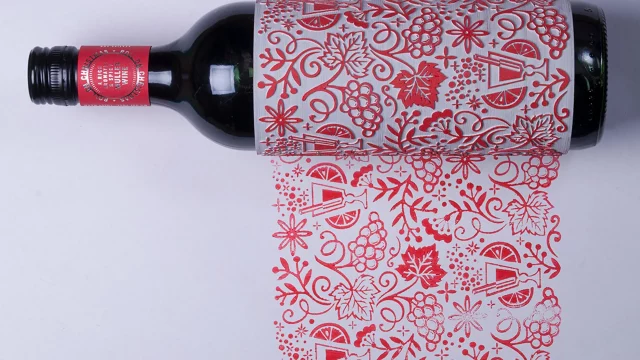Wine label printing is a crucial aspect of the wine industry. A wine label is not a tool for branding and marketing; it is also a legal requirement that provides vital information about the product. The design and printing of wine labels have evolved, reflecting changing consumer preferences and trends.
In this article, we explore the top trends in wine label design and printing.
Table of Contents
1. Minimalism
Minimalism is a popular trend in wine label design that focuses on simple and clean designs. These labels often use limited color palettes, minimalist typography, and negative space to create a sleek and modern look.
Minimalist designs can create a sense of sophistication and elegance, appealing to consumers who prioritize simplicity and quality. By using a minimalist design, wineries can also make their labels easier to read and distinguish on the shelf, which can help increase sales.
Overall, minimalism in wine label design is a timeless trend that can create a lasting and memorable impression on consumers.
2. Handwritten Fonts
Handwritten fonts are a popular trend in wine label design that adds a personal and artisanal touch to the label. These fonts can create a sense of authenticity and uniqueness, which can help wineries to stand out in a crowded marketplace. Handwritten fonts do an impressive job of telling a wine’s name, description, or other details.
You can also combine them with other design elements, such as illustrations or textures, to create a cohesive and visually appealing label. By using handwritten fonts, wineries can create a personalized and charming design that connects with consumers on an emotional level and reinforces the wine’s story and character.
3. Bold Colours
Bold colors are a trend that is making a comeback in wine label design. Bright and bold colors are eye-catching and can help a bottle stand out on the shelf. Bold colors can create a playful or whimsical design or make a statement.
For example, a bold red label can signify a bold and robust wine, while a bright yellow label can signify a light and fruity wine.
4. Vintage Designs
Vintage designs have been a popular trend in wine label design for many years. Vintage designs evoke a sense of nostalgia and tradition, which can be particularly appealing for older consumers or those looking for a classic wine experience. Vintage designs typically feature a combination of classic fonts, detailed illustrations, and muted colors. These designs can combine with modern elements to create a unique and updated vintage look.
5. Geometric Shapes
Geometric shapes are a trendy design element becoming more popular in wine label design. These shapes can create a modern and abstract design or create a sense of structure and balance.
Geometric shapes can be the primary design element or complementary to other design elements such as text or illustrations. By incorporating geometric shapes into their labels, wineries can create a unique and visually striking design that stands out on the shelf and captures the attention of consumers.
6. Sustainable Materials
Sustainable materials are becoming increasingly popular in wine label printing. Many wineries are choosing to use recycled paper or biodegradable materials for their alcohol labels to reduce their environmental impact.
These sustainable materials can create unique and environmentally friendly designs that appeal to consumers who prioritize sustainability. Besides being eco-friendly, sustainable materials can help wineries differentiate themselves from their competitors and build brand loyalty among environmentally conscious consumers.
By using sustainable materials for their labels, wineries can demonstrate their commitment to sustainability and contribute to a more sustainable future for the wine industry.
7. Storytelling
Storytelling is a trend that has become increasingly popular in wine label design. Consumers are looking for unique and authentic experiences, and wineries are using their labels to tell a story about their wine and winemaking process.
You can tell a story through the use of illustrations, text, or photographs. For example, a winery might include a brief history of the vineyard or a description of the winemaking process on its label.
8. Interactive Labels
Interactive alcohol labels are a new trend in wine label design that is revolutionizing how consumers interact with wine bottles. These labels use augmented reality or QR codes to give consumers extra information about the wine or winery.
With the help of a smartphone or tablet, consumers can scan the label to access additional content such as videos, tasting notes, or even virtual winery tours. Interactive labels provide wineries with a new way to engage consumers and create a memorable experience.
As a result, wineries can build brand loyalty and increase sales. Interactive labels also allow wineries to stand out in a crowded marketplace and differentiate themselves from their competitors.
As technology continues to advance, the possibilities for interactive labels are endless. Wineries can use these labels to create a unique and personalized experience for consumers and create a lasting impression that will keep them returning for more.
Final Thoughts
Wine label design and printing are important aspects of the wine industry that reflect changing consumer preferences and trends. Wineries can use these trends to create unique and memorable alcohol labels.
DAL is a reputed labeling partner for big and small businesses. So, if you want to take this forward, you can reach out to DAL and discuss your needs.








